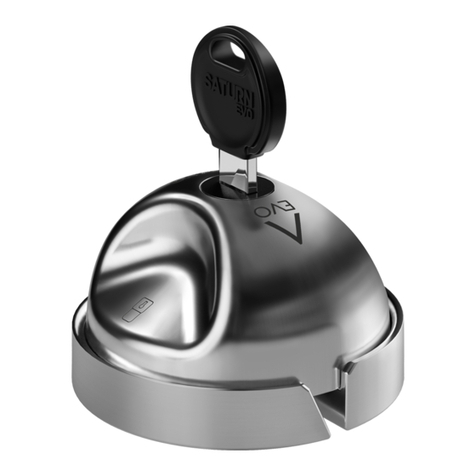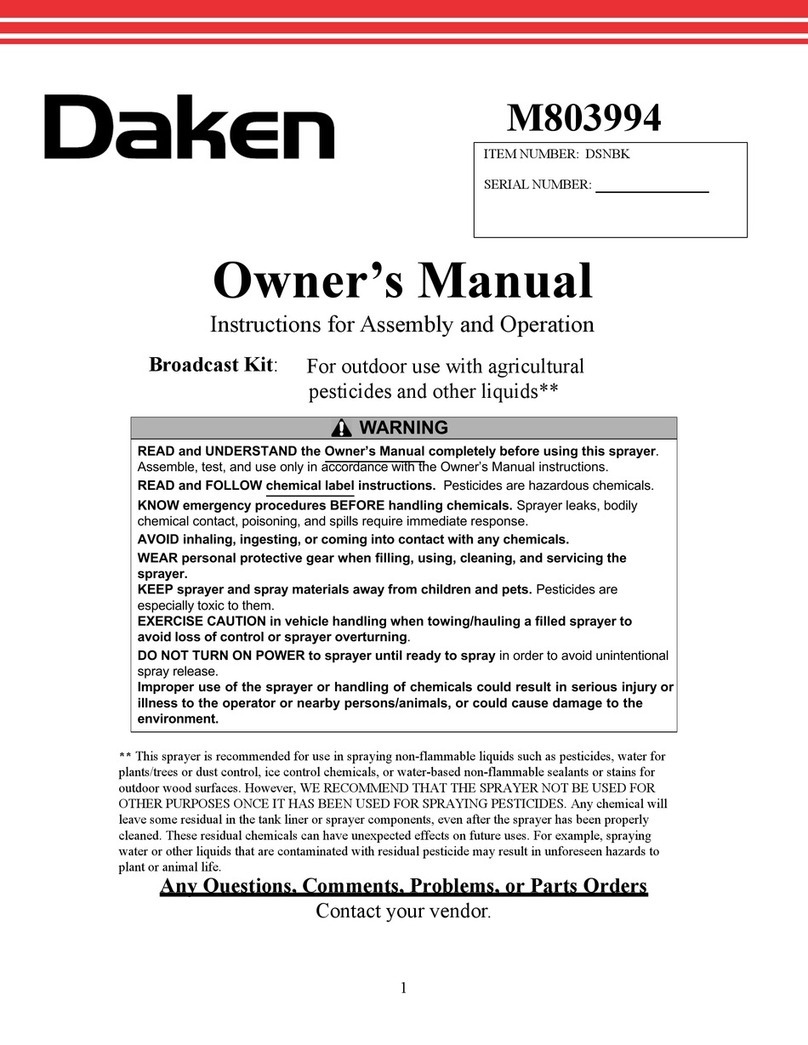
OWNER’S MANUAL
- 6 -
During Spraying
•DO NOT OVER-APPLY pesticide. Apply at rate recommended by chemical manufacturer. Excess pesticide can be dangerous to
humans/animals, damage desirable plants, and contaminate soil and water sources.
•DO NOT EAT, DRINK, SMOKE, RUB YOUR EYES, or TOUCH YOUR BARE SKIN while handling chemicals and spraying.
• NEVER POINT THE SPRAY GUN at people or animals.
• EXERCISE EXTRA CAUTION when spraying near areas accessible to children and pets.
• CLEAN up spills immediately per instructions on the chemical label.
• TURN OFF vehicle and set brake or block wheels, TURN OFF power to sprayer, and RELIEVE system pressure before
leaving sprayer unattended.
• SEE Troubleshooting section of this manual before attempting any repairs. Wear personal protective equipment and
follow safety instructions.
After Spraying
• CLEAN sprayer immediately after use according to the directions provided in this manual.
•DECONTAMINATE yourself after you are done spraying and have cleaned the sprayer. Wash all exposed areas of the body
with soap and water, and remove and launder clothing.
• DISPOSE OF or STORE remaining chemicals in secure storage with correctly marked container.
ATV VEHICLE HANDLING SAFETY
•DO NOT ALLOW drivers younger than 16 to operate ATV with sprayer attached.
• EXERCISE SPECIAL CAUTION in ATV vehicle handling and DO NOT exceed 8 KM/H. ATV will be less stable and perform
very differently with filled sprayer attached. Exercise particular caution on sloped or rough surfaces to avoid rollover. Use a
vehicle equipped with rollover protection for use on non-level terrain.
•DO NOT RIDE or TRANSPORT cargo on the sprayer.
CHEMICAL ACCIDENT PROCEDURES
Immediate response is necessary in the event of sprayer leaks, bodily chemical contact, poisoning, or spills. See instructions below:
leak
the pump develops a leak, immediately stop spraying.Turn off power to the pump and
as applicable.
contamination can occur when chemicals splash, spill, or spray directly onto a person.
Immediately follow First Aid instructions on chemical
label. General procedures can include:
a. Eyes: immediately flush with water.
b. Skin: wash all contaminated skin surfaces with soap and water.
c. Clothing: remove contaminated clothing. Dispose of heavily contaminated clothing per chemical
label instructions.
Seek medical advice if instructed on the label or the victim experiences symptoms of harmful effects.
Bring the chemical label for reference.
oisoning by
or
case of poisoning from ingestion or inhalation:
the victim has collapsed or is not breathing, call 000.Otherwise:
If you are the victim, immediately seek assistance from nearby personnel because you may
become incapacitated.
Immediately follow first aid instructions on chemical label.
Call a poison control center for further advice. In Australia call Poison Information Centre on
13 11 26. Have the chemical label available for reference.
spills
spills must be quickly contained and properly cleaned up. Refer to the chemical label for any
clean-up instructions.
procedures include:
Controlling the spill by stopping the source of the spill.
Containing the spill so that it does not spread and get into water sources.
Cleaning up the spill immediately.
Seeking additional advice from:
-Chemical manufacturer. See chemical label for contact information.
-Pesticide Information. In Australia call the National Pesticide Authority on (02) 6210 4700.
SUMMARY OF IMPORTANT INFORMATION































